Measurement of the Acoustic Relaxation Absorption Spectrum of CO2 Using a Distributed Bragg Reflector Fiber Laser
Abstract
1. Introduction
2. Ultrasonic Sensing Model of the DBR Fiber Laser
2.1. Response of the DBR Fiber Laser to Ultrasonic Wave
2.2. Ultrasonic Wave Sensing Model of the DBR Fiber Laser
2.2.1. The Optical Interrogation Signal of the DBR Fiber Laser
2.2.2. Calibration of the Ultrasonic Response of the DBR Fiber Laser
3. Measurement of the Acoustic Relaxation Absorption and Concentration of CO2 with the DBR Fiber Laser Ultrasonic Sensor
3.1. Measurement of the Acoustic Relaxation Absorption at a Specific Frequency
3.2. Measurement Results of the Absorption Spectrum of CO2
4. Discussion
4.1. Systematic Error Results from Variation of f/p
4.2. The Temperature and Pressure Instability of the Gas Chamber and Compensation
5. Conclusions
Author Contributions
Funding
Institutional Review Board Statement
Informed Consent Statement
Data Availability Statement
Acknowledgments
Conflicts of Interest
References
- Fechter, S.; Hindenlang, F.; Frank, H.; Munz, C.D.; Gassner, G. Discontinuous Galerkin Schemes for the Direct Numerical Simulation of Fluid Flow and Acoustics. In Proceedings of the 18th AIAA/CEAS Aeroacoustics Conference (33rd AIAA Aeroacoustics Conference), Colorado Springs, CO, USA, 4–6 June 2012. [Google Scholar]
- Oehme, M. Determination of isomeric polycyclic aromatic hydrocarbons in air particulate matter by high-resolution gas chromatography/negative ion chemical ionization mass spectrometry. Anal. Chem. 1983, 55, 2290–2295. [Google Scholar] [CrossRef]
- Geberth, R. A New Method of Gas Analysis. Ind. Eng. Chem 2002, 15, 1277–1278. [Google Scholar] [CrossRef]
- Zarnecki, J.C.; Leese, M.R.; Hathi, B.; Ball, A.J.; Hagermann, A.; Towner, M.C.; Lorenz, R.D.; Mcdonnell, J.A.M.; Green, S.F.; Patel, M.R. A soft solid surface on Titan as revealed by the Huygens Surface Science Package. Nature 2005, 438, 792–795. [Google Scholar] [CrossRef] [PubMed]
- Terhune, J.H. Method and apparatus for detecting hydrogen, oxygen and water vapor concentrations in a host gas. Int. J. Hydrogen Energy 2014, 11, 135. [Google Scholar]
- Phillips, S.; Dain, Y.; Lueptow, R.M. Theory for a gas composition sensor based on acoustic properties. Meas. Sci. Technol. 2003, 14, 70. [Google Scholar] [CrossRef] [PubMed]
- Zhu, M.; Liu, T.; Wang, S.; Zhang, K. Capturing molecular multimode relaxation processes in excitable gases based on decomposition of acoustic relaxation spectra. Meas. Sci. Technol. 2017, 28, 085008. [Google Scholar] [CrossRef]
- Zhang, K.; Zhang, X.; Shao, F. Gas equilibrium heat capacity synthesis under the influence of acoustic relaxation process and its application in gas detection. Chin. J. Acoust. 2019, 4. [Google Scholar]
- Zhao, W.; Lou, W.; Xu, Y. Concentration Measurement of Carbon Dioxide based on Ultrasonic Principle. Meas. Sens. 2021, 15, 100040. [Google Scholar] [CrossRef]
- Gil, M.; Manzaneque, T.; Hernando-García, J.; Ababneh, A.; Seidel, H. Multimodal characterisation of high-Q piezoelectric micro-tuning forks. Circuits Devices Syst. Iet 2013, 7, 361–367. [Google Scholar] [CrossRef]
- Gang, T.; Hu, M.; Qiao, X.; Li, J.C.; Shao, Z.; Tong, R.; Rong, Q. Fiber-optic Michelson interferometer fixed in a tilted tube for direction-dependent ultrasonic detection. Opt. Lasers Eng. 2017, 88, 60–64. [Google Scholar] [CrossRef]
- Preisser, S.; Rohringer, W.; Liu, M.; Haindl, R.; Drexler, W. All-optical highly sensitive akinetic sensor for ultrasound detection and photoacoustic imaging. Biomed. Opt. Express 2016, 7, 4171–4186. [Google Scholar] [CrossRef] [PubMed]
- Yang, L.; Li, Y.; Fang, F.; Li, L.; Yan, Z.; Zhang, L.; Sun, A.Q. Highly sensitive and miniature microfiber-based ultrasound sensor for photoacoustic tomography. Opt.-Electron. Adv. 2022, 5, 8. [Google Scholar] [CrossRef]
- Guan, B.O.; Tam, H.Y.; Lau, S.T.; Chan, H. Ultrasonic hydrophone based on distributed Bragg reflector fiber laser. IEEE Photonics Technol. Lett. 2005, 17, 169–171. [Google Scholar] [CrossRef]
- Guan, B.O.; Jin, L.; Ma, J.; Liang, Y.; Bai, X. Flexible fiber-laser ultrasound sensor for multiscale photoacoustic imaging. Opto-Electron. Adv. 2021, 4, 200081. [Google Scholar] [CrossRef]
- Liang, Y.; Fu, W.; Li, Q.; Chen, X.; Sun, H.; Wang, L.; Jin, L.; Huang, W.; Guan, B.-O. Optical-resolution functional gastrointestinal photoacoustic endoscopy based on optical heterodyne detection of ultrasound. Nat. Commun. 2022, 13, 7604. [Google Scholar] [CrossRef] [PubMed]
- Min, R.; Liu, Z.; Pereira, L.; Yang, C.; Marques, C. Optical fiber sensing for marine environment and marine structural health monitoring: A review. Opt. Laser Technol. 2021, 140, 107082. [Google Scholar] [CrossRef]
- Ejakov, S.G.; Phillips, S.; Dain, Y.; Lueptow, R.M.; Visser, J.H. Acoustic attenuation in gas mixtures with nitrogen: Experimental data and calculations. J. Acoust. Soc. Am. 2003, 113, 1871–1879. [Google Scholar] [CrossRef] [PubMed]

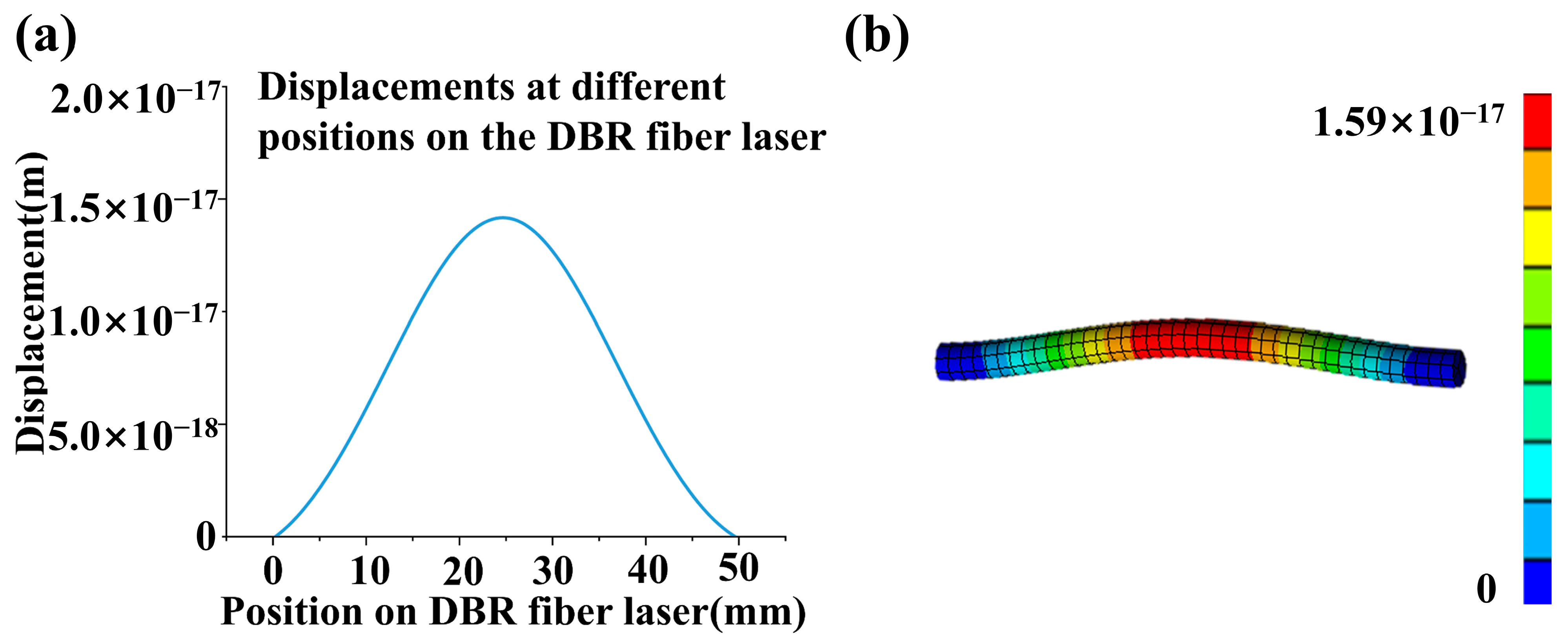
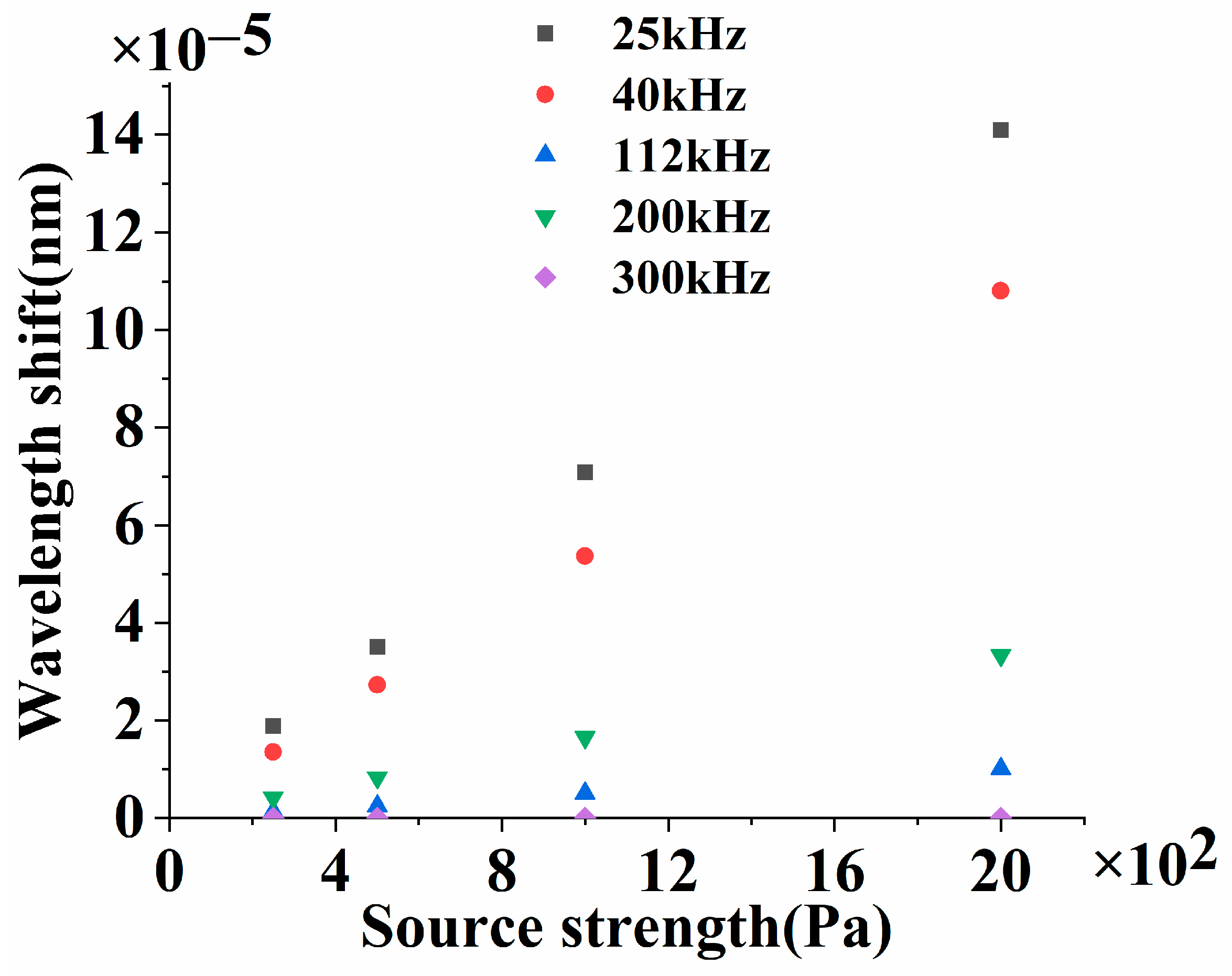
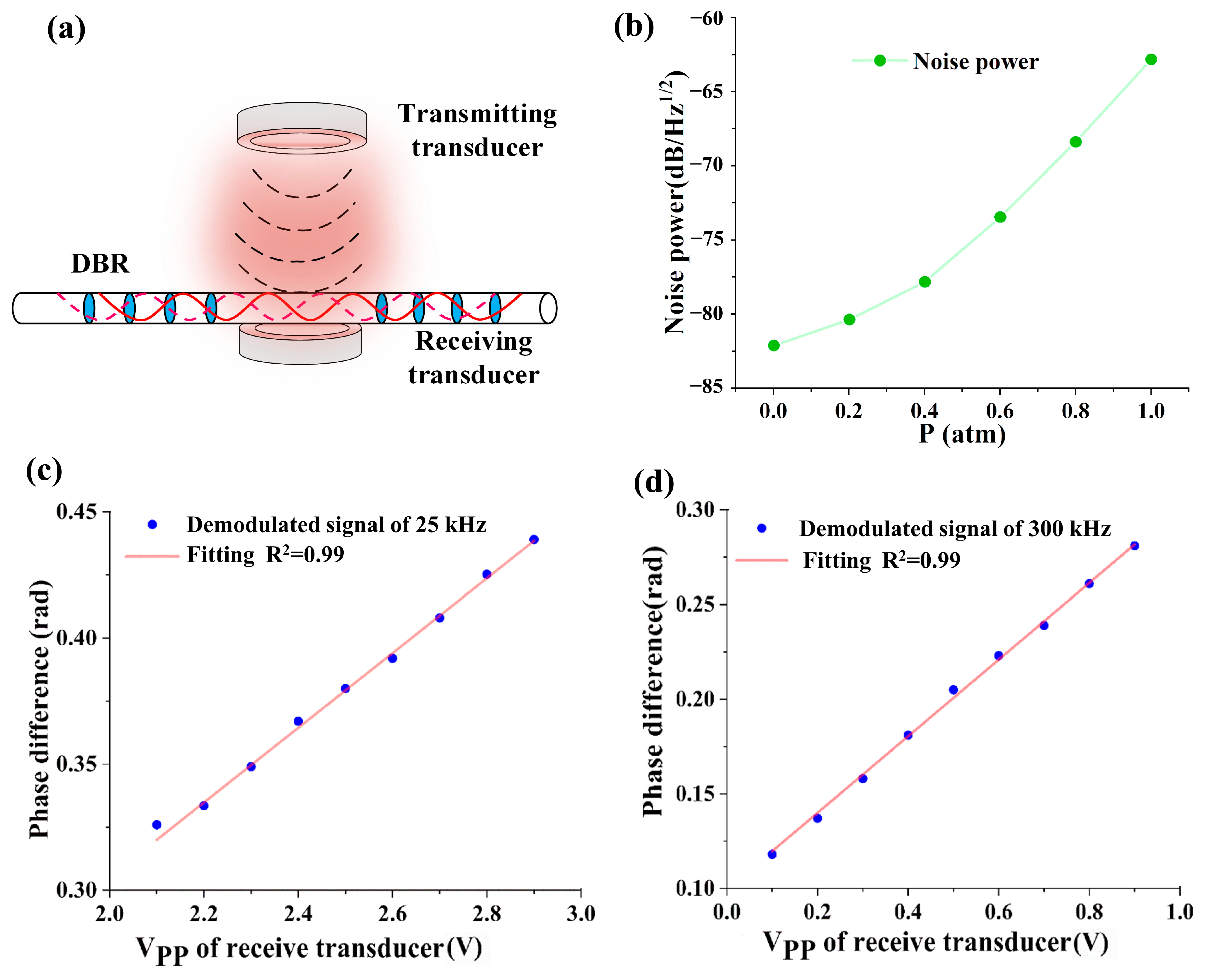
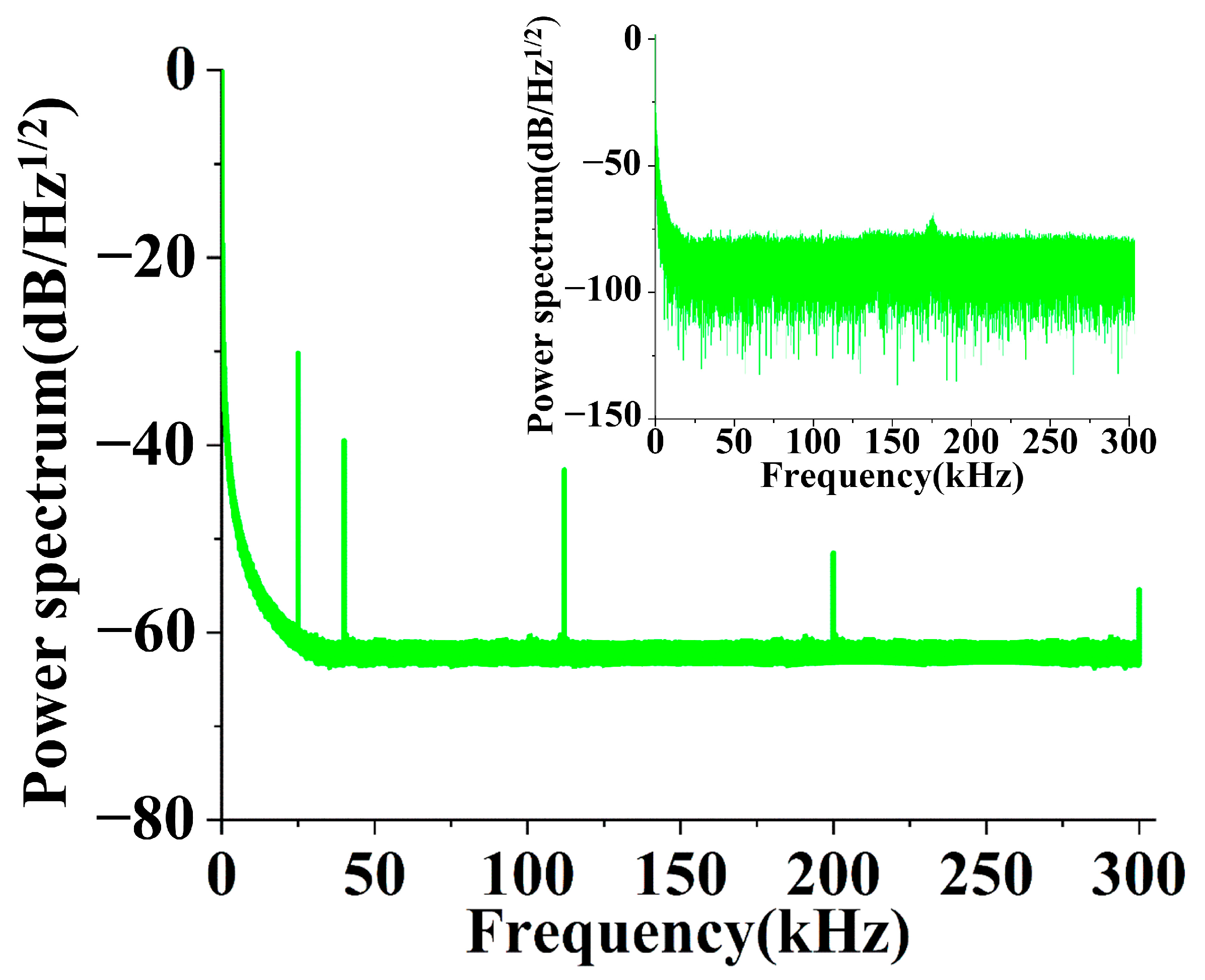
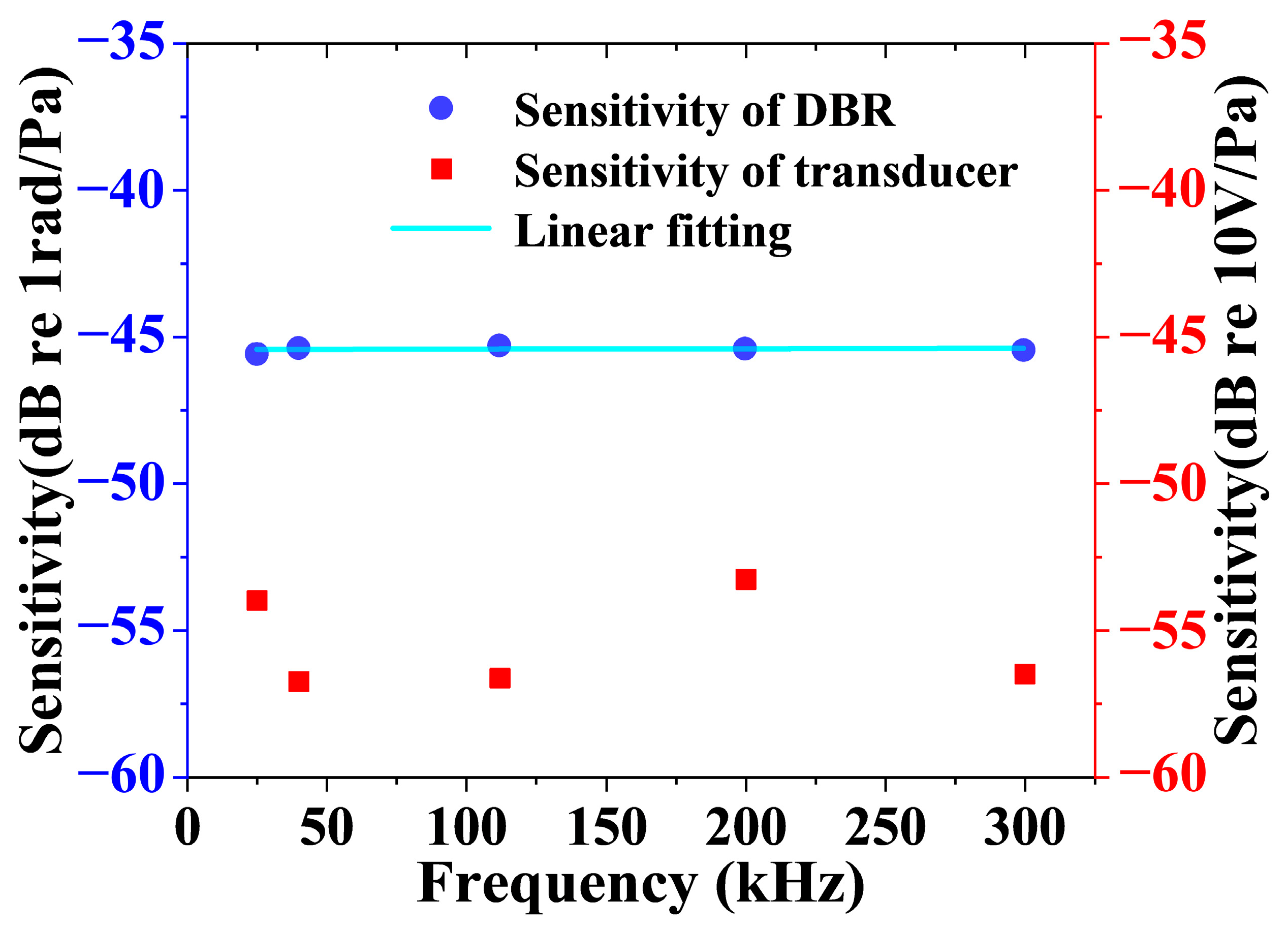
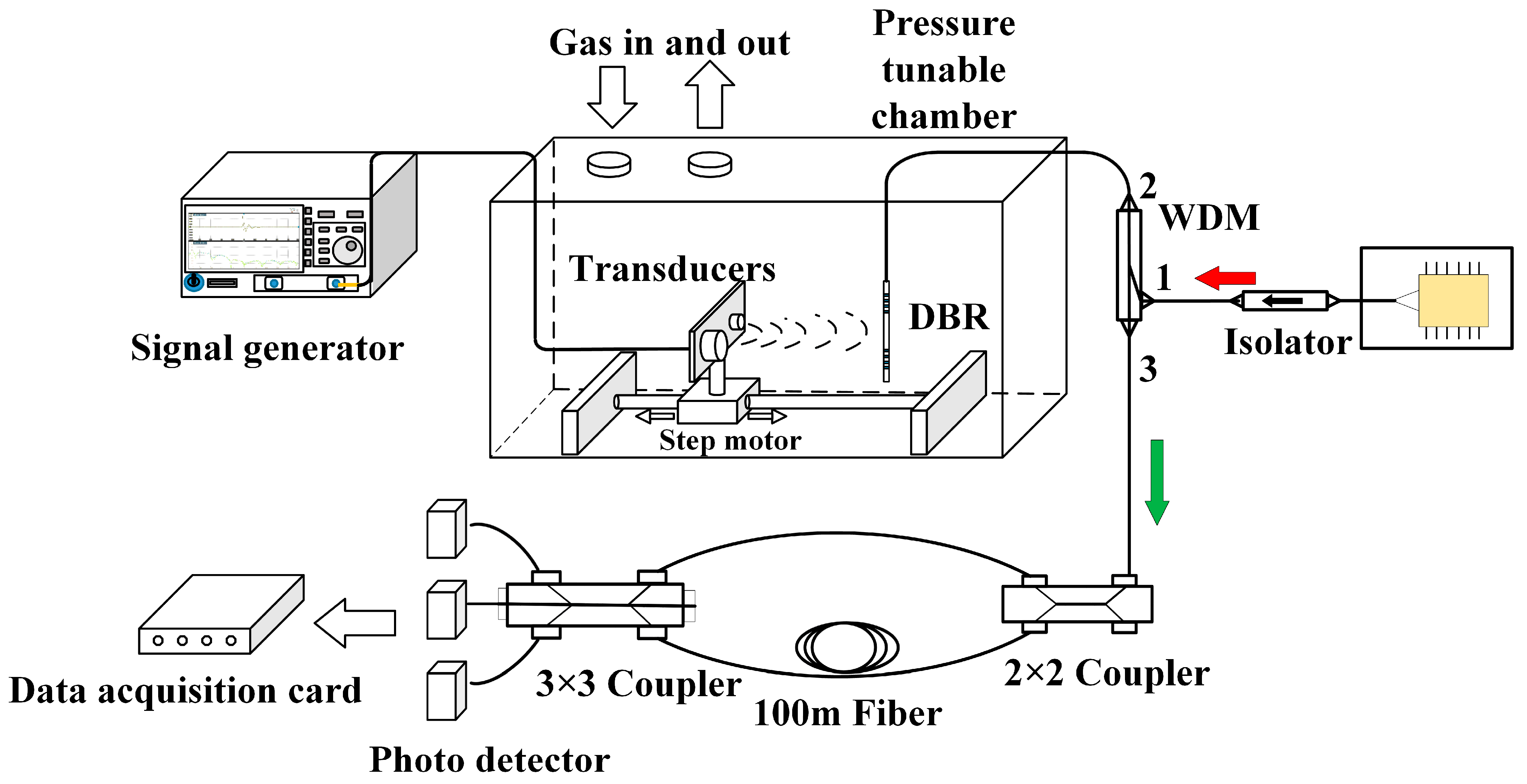
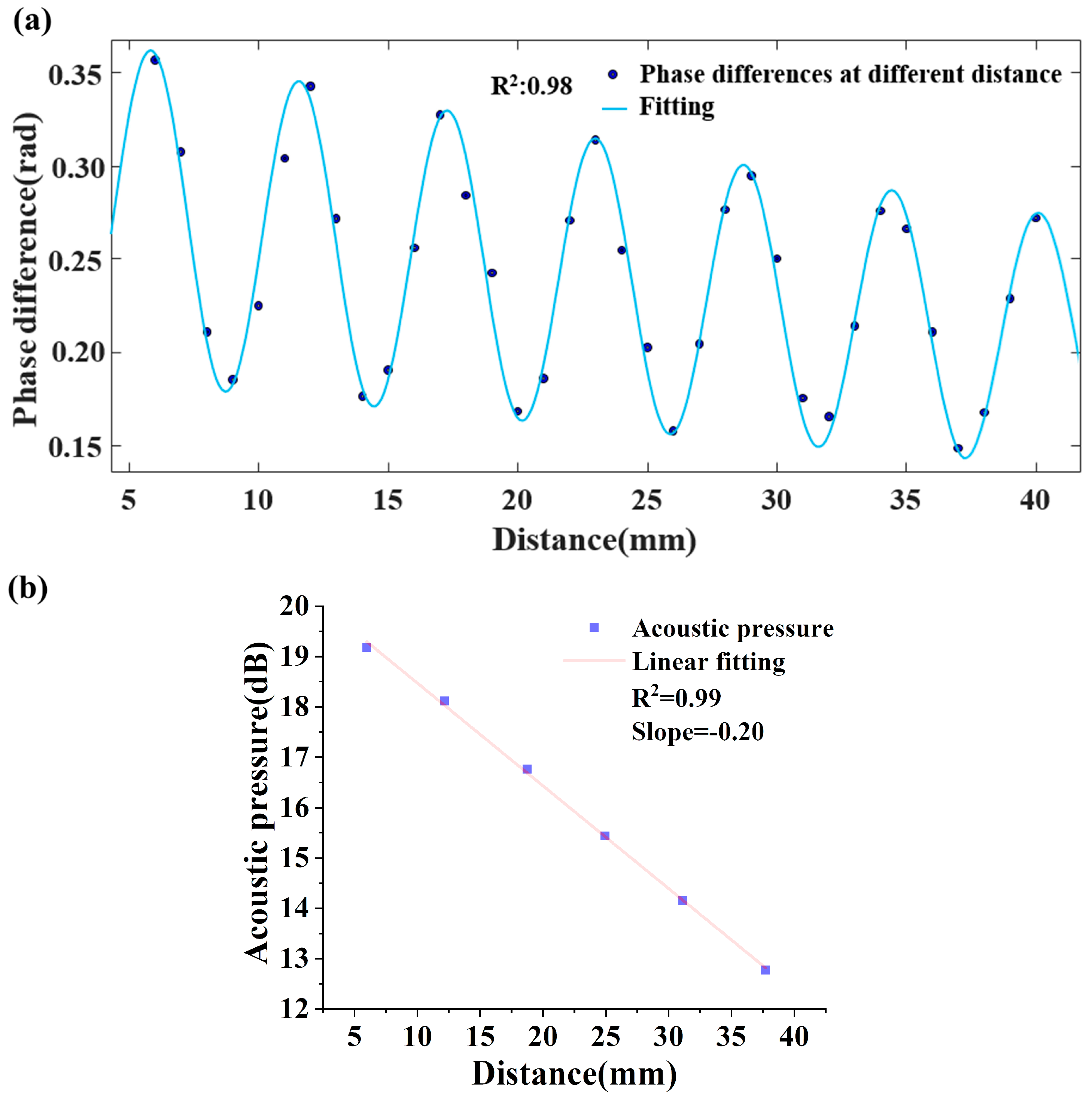

Disclaimer/Publisher’s Note: The statements, opinions and data contained in all publications are solely those of the individual author(s) and contributor(s) and not of MDPI and/or the editor(s). MDPI and/or the editor(s) disclaim responsibility for any injury to people or property resulting from any ideas, methods, instructions or products referred to in the content. |
© 2023 by the authors. Licensee MDPI, Basel, Switzerland. This article is an open access article distributed under the terms and conditions of the Creative Commons Attribution (CC BY) license (https://creativecommons.org/licenses/by/4.0/).
Share and Cite
Shen, K.; Yuan, J.; Li, M.; Wen, X.; Lu, H. Measurement of the Acoustic Relaxation Absorption Spectrum of CO2 Using a Distributed Bragg Reflector Fiber Laser. Sensors 2023, 23, 4740. https://doi.org/10.3390/s23104740
Shen K, Yuan J, Li M, Wen X, Lu H. Measurement of the Acoustic Relaxation Absorption Spectrum of CO2 Using a Distributed Bragg Reflector Fiber Laser. Sensors. 2023; 23(10):4740. https://doi.org/10.3390/s23104740
Chicago/Turabian StyleShen, Kun, Jixian Yuan, Min Li, Xiaoyan Wen, and Haifei Lu. 2023. "Measurement of the Acoustic Relaxation Absorption Spectrum of CO2 Using a Distributed Bragg Reflector Fiber Laser" Sensors 23, no. 10: 4740. https://doi.org/10.3390/s23104740
APA StyleShen, K., Yuan, J., Li, M., Wen, X., & Lu, H. (2023). Measurement of the Acoustic Relaxation Absorption Spectrum of CO2 Using a Distributed Bragg Reflector Fiber Laser. Sensors, 23(10), 4740. https://doi.org/10.3390/s23104740






